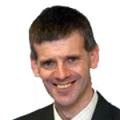
HERE is a typical, true story from the Dales in 2018.
A local couple in their mid-twenties have just got engaged. But they are not getting married any time soon. Rather than ‘splash out’ on a wedding, they are going to keep saving to buy a house.
They are happy here, as most of us are, and would like to live here, but they know that to get on the housing ladder they will have to leave. They are looking to move east, perhaps to Catterick, Colburn or Darlington, where houses are generally cheaper than in the national park.
This is hardly a new story. Young Dalesfolk have been facing the same dilemma for 25 years. The result is that we have an acute shortage of people of working age in the park.
An obvious solution is to build more homes. In the past decade in particular, the park authority with partner local authorities has put an immense amount of work into trying to get new, affordable homes built. Since we are in a national park, it has not been easy, but slowly we’ve seen high-quality, affordable schemes coming through the planning service.
Last year, 39 new, affordable homes were built in the park. That is good news, yet it must be set in the context of this knock-me-down statistic: for every new house that is built in the park, two move from permanent occupancy to become a holiday let or a second home. One in four of the 13,500 homes in the park now sits within this category of part-occupied housing.
The vibrancy and vitality of Dales communities is at stake. We either do something, or we do nothing.
Just before Christmas, the national park authority formally backed a plan to develop co-ordinated plans to retain and attract families and people of working age to live in the Dales. A team of officers drawn from several local authorities are drafting objectives.
A lot of thought is going into possible economic regeneration projects – and a strong emphasis is being placed on new housing, jobs and better broadband provision.
Within these plans sits a proposal to lobby Government for the power to significantly increase Council Tax on second homes (not holiday lets) in the park – by at least five times – for a pilot period of five years.
This proposal is at a critical stage. It is now up to the eight constituent county and district councils in the park to make up their minds, although it has already won the enthusiastic support of South Lakeland District Council leader Giles Archibald.
I would like to stress that I have nothing against second home owners – far from it. They love the Dales and make a contribution to the local economy.
The problem is the impact of second home ownership. There are simply too many second homes and the number is increasing.
That they lie empty for most of the time is a terrible waste; for local young couples looking for a home, such as the one just celebrating an engagement, it must seem very wrong.
The sharp growth in second home ownership during the past 20 years has pushed up house prices, denied dwellings to permanent residents and left some communities hollowed out. More than anything, rapidly shrinking primary school rolls have focussed minds.
The moment has come to take action. It will take political courage to push the proposal through, as it is both controversial and radical.
If this generation of politicians chooses to do nothing, it will be tantamount to conceding that all we can do is manage the slow decline of the park’s communities.



Comments: Our rules
We want our comments to be a lively and valuable part of our community - a place where readers can debate and engage with the most important local issues. The ability to comment on our stories is a privilege, not a right, however, and that privilege may be withdrawn if it is abused or misused.
Please report any comments that break our rules.
Read the rules here